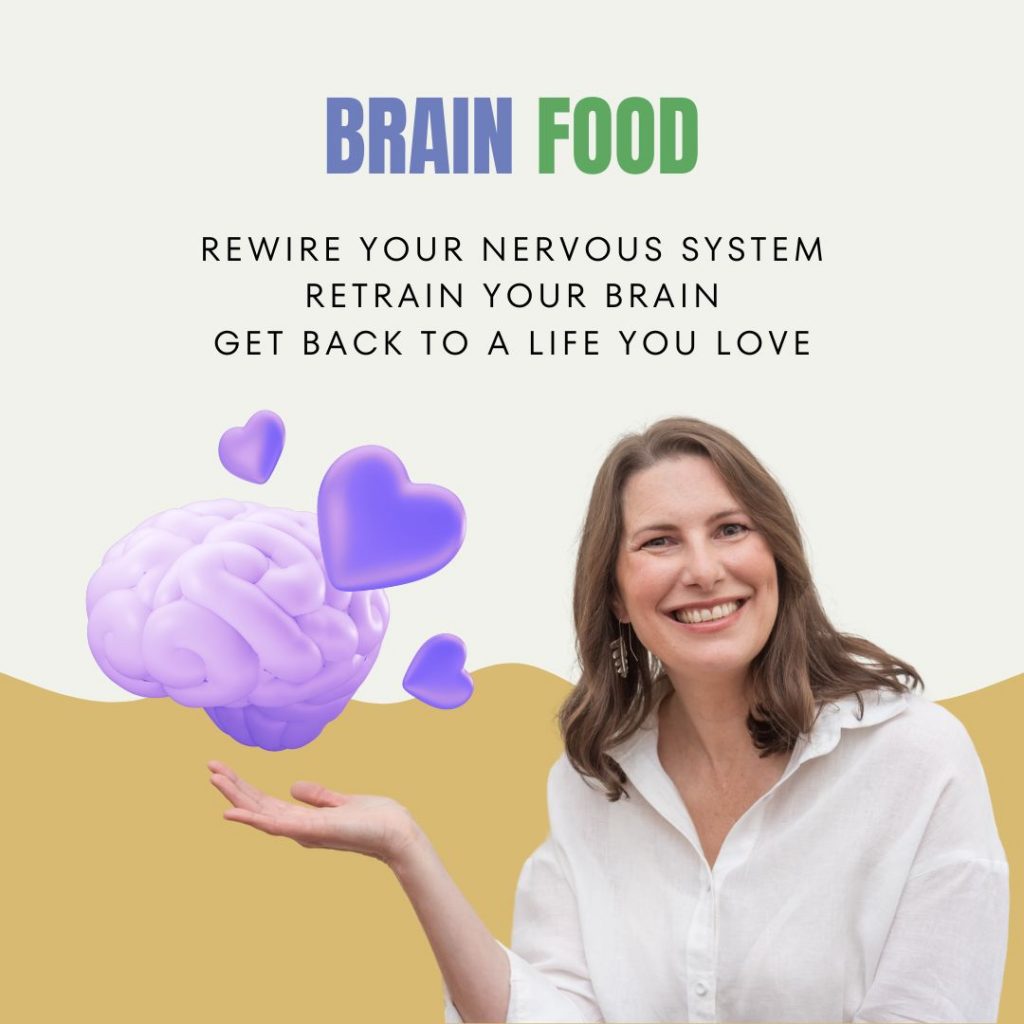Pregnenolone steal is frequently responsible for the hormonal fluctuations experienced by many women. Including during PMS, perimenopause, and other imbalances in female hormones.
While it may seem commonplace due to its widespread impact on women, it’s essential to recognize that this isn’t a normal state. Instead, it serves as a symptom of chronic stress, leading to what is known as pregnenolone steal.
Understanding this hormone pathway might seem complex. In this blog, I’ll explain the pregnenolone steal, why it matters and point out signs to watch for.
What is pregnenolone?
Pregnenolone, a hormone created by the adrenal gland, is naturally produced in the body. Derived from cholesterol, it serves as the foundation for synthesising various hormones. Including:
- Oestrogen
- Progesterone
- Testosterone
- Cortisol
Often labelled as a “precursor” or “pro-hormone,” pregnenolone acts as an essential biochemical material in the hormonal production process.
What is the pregnenolone steal:
While pregnenolone is instrumental in generating various hormones, it doesn’t directly control the quantity of each hormone produced. Instead, it navigates two pathways, resembling a fork in the road, where cars (representing hormones) travel down distinct routes.
Each path has exits (symbolizing different hormones) that cars can take to reach their final destination. Pregnenolone guides the cars down the paths but doesn’t influence the specific hormone exit they choose. In simpler terms, it’s indifferent to which hormones are created.
However, pregnenolone does manage the traffic flow at the fork, determining which path the cars should take. Sometimes, one path might receive more traffic than the other, a phenomenon known as “pregnenolone steal.” This is often triggered by a prevalent factor in our modern lives – stress.
What happens when the body is stressed?
When the body is under prolonged stress, the adrenal glands, which produce hormones like cortisol, increase cortisol production to help the body cope. In this process, pregnenolone, which would normally be used to produce sex hormones, is diverted (more traffic) to produce more cortisol. This diversion of pregnenolone from sex hormone production to stress hormone production is what is referred to as “pregnenolone steal.”
What happens when cortisol is prioritised?
The problem arises because the body has a limited supply of pregnenolone, and prioritizing cortisol production can lead to imbalances in sex hormones. This imbalance can show up as a deficiency in progesterone.
Signs of Progesterone deficiency:
Here are some of the signs that point to a progesterone deficiency (which may also indicate that the pregnenolone steal is happening):
Mood Swings:
Irregularities in progesterone levels can contribute to mood swings, irritability, and heightened emotional sensitivity.
Depression and Anxiety:
Low progesterone may be associated with feelings of depression and increased anxiety.
Migraines:
Some individuals with progesterone deficiency may experience more frequent and intense headaches or migraines.
Insomnia:
Hormonal imbalances, including low progesterone, can disrupt sleep patterns, leading to insomnia or restless sleep.
Fatigue:
A persistent sense of fatigue and low energy levels may be indicative of progesterone deficiency.
Irregular Menstruation:
Changes in menstrual cycles, including irregular periods or heavy bleeding, may be linked to inadequate progesterone.
Inability to Concentrate:
Progesterone plays a role in cognitive function, and a deficiency might result in difficulty concentrating or mental fog.
Low Libido:
Hormonal imbalances, including low progesterone, can contribute to a decrease in libido or sexual interest.
Breast Tenderness:
Progesterone deficiency may be associated with increased breast tenderness and swelling.
Water Retention:
Some individuals may experience bloating and water retention due to hormonal fluctuations, including low progesterone.
Hot Flashes:
While commonly associated with menopause, hormonal imbalances such as low progesterone can contribute to hot flashes at various stages.
Vaginal Dryness:
In women, decreased levels of progesterone might contribute to vaginal dryness and discomfort.
Is the answer to boost progesterone?
Unfortunately not. Because the pathway is > pregnenolone > progesterone > cortisol. If you boost progesterone then the extra progesterone keeps going down the pathway to make cortisol and makes things worse, not better.
Could it be the pregnenolone steal?
Tired, low libido and generally feeling off? These could all be signs that you may be affected by the pregnenolone steal. Low progesterone is a common denominator in these symptoms.
How to combat the pregnenolone steal?
Firstly, testing can be a good place to start. Accessing what cortisol is doing over a 24-hour period can give us good data to determine what is going on in your body.
Secondly, let’s look at some of the ways that you can help get on top of things:
Number 1 is Manage stress!
One of the key areas to combat the pregnenolone steal is to tackle the underlying chronic stress. Lifestyle changes, stress management strategies, nutritional support, and supplements are often recommended to restore hormonal harmony.
#1 Stress Management
Address stress, whether stemming from significant trauma or prolonged low-level stress, as a top priority. Chronic stress can contribute to adrenal fatigue and hormonal imbalances.
While removing stress sources is ideal, practical constraints may make it challenging. The stress in itself is not always the issue – the problem is the brain and body gets stuck in the stress response as the nervous system is not regulating properly.
A well-regulated nervous system is the key, responding quickly to stressors and then also resolving quickly after the stressor has passed. In our modern life often stressors such as health, relationships or work are constant, so we don’t always get that resolution!
Explore coping strategies such as meditation, yoga, tai chi, massage, spending time outdoors, and regular exercise or a program such as BrainFood to manage stress and promote overall well-being.
Another option is the Safe and Sound Protocol – SSP, which I recommend to a lot of my clients.
The Safe and Sound Protocol (SSP) is a five-hour audio program designed to reduce stress and auditory sensitivity while enhancing social engagement and resilience. Based on Dr. Porges’ Polyvagal Theory, by calming the physiological and emotional state, the door is opened for improved communication, natural healing and more successful treatment.
Find out more information about the Safe and Sound Protocol
#2 Nutritional Wellness
Prioritize nutrition by focusing on whole, natural fresh, low histamine foods such as fruits, vegetables, lean proteins, nuts, seeds, and healthy fats like omega-3s from oily fish and extra virgin olive oil.
Recognize food not just as sustenance but as a form of medicine that can promote healing at the cellular level. Cells, the body’s fundamental building blocks, require quality nutrition for repair and renewal.
#3 Adequate Rest and Sleep
Insufficient sleep elevates cortisol levels, potentially leading to various health issues. Persistent sleep deprivation can contribute to problems like adrenal fatigue, weight gain, hormone imbalances, and infertility.
Ensure 7-8 hours of quality sleep each night and incorporate periods of rest and relaxation into your routine. Distinguish between sleep and relaxation, acknowledging the importance of both for overall well-being. Read about 5 simple tips for a good nights sleep
#4 Balanced Exercise
Even in challenging times, consider incorporating regular, gentle exercise into your routine. Overexertion without proper self-care can strain adrenal health. Include a variety of activities such as aerobic exercise, flexibility work, and resistance training, gradually building up over time.
What about Pregnenolone steal and histamine intolerance?
As highlighted in this blog, elevated stress levels lead to an increase in cortisol. Prolonged stress can impact the gut microbiome, influencing neurotransmitters such as histamine. Additionally, chronic stress may contribute to the development of a leaky gut, further aggravating histamine intolerance. Many of the symptoms often found in histamine intolerance and mast cell activation syndrome (MCAS) overlap with the symptoms of pregnenolone steal and low progesterone we talked about today.
On this website, I’ve written several blogs about the impact of stress on histamine intolerance. Here are some of the key articles.
Understanding the Pregnenolone steal helps shed light on the hormonal imbalances experienced by many women during PMS, perimenopause, and other phases of hormonal fluctuations.
It is crucial to recognize that this phenomenon is not a normal state but rather a symptom of chronic stress. Pregnenolone, a hormone serving as the precursor for various hormones, diverts towards cortisol production under prolonged stress, resulting in imbalances in sex hormones.
Simply boosting progesterone may not be the solution due to the complex hormonal process. Instead, adopting a holistic approach involving stress management, proper nutrition, sufficient rest, and balanced exercise is crucial for restoring hormonal balance.
The connection between pregnenolone steal and histamine intolerance highlights the interdependence of stress, hormones, and overall well-being. The great thing is you can do a lot by following practical strategies to work on your nervous system and reduce the impact of stress on your body.

Stuck dealing with confusing sometimes random symptoms and can’t seem to figure out why?
Join BrainFood and learn how to simply use the latest Neuroscience to help your body heal itself.
Use easy tools to reduce symptoms, calm anxiety, improve sleep, increase tolerance to foods and activities and get better results from treatments.

 Anxiety and Histamine – Are they connected?
Anxiety and Histamine – Are they connected?